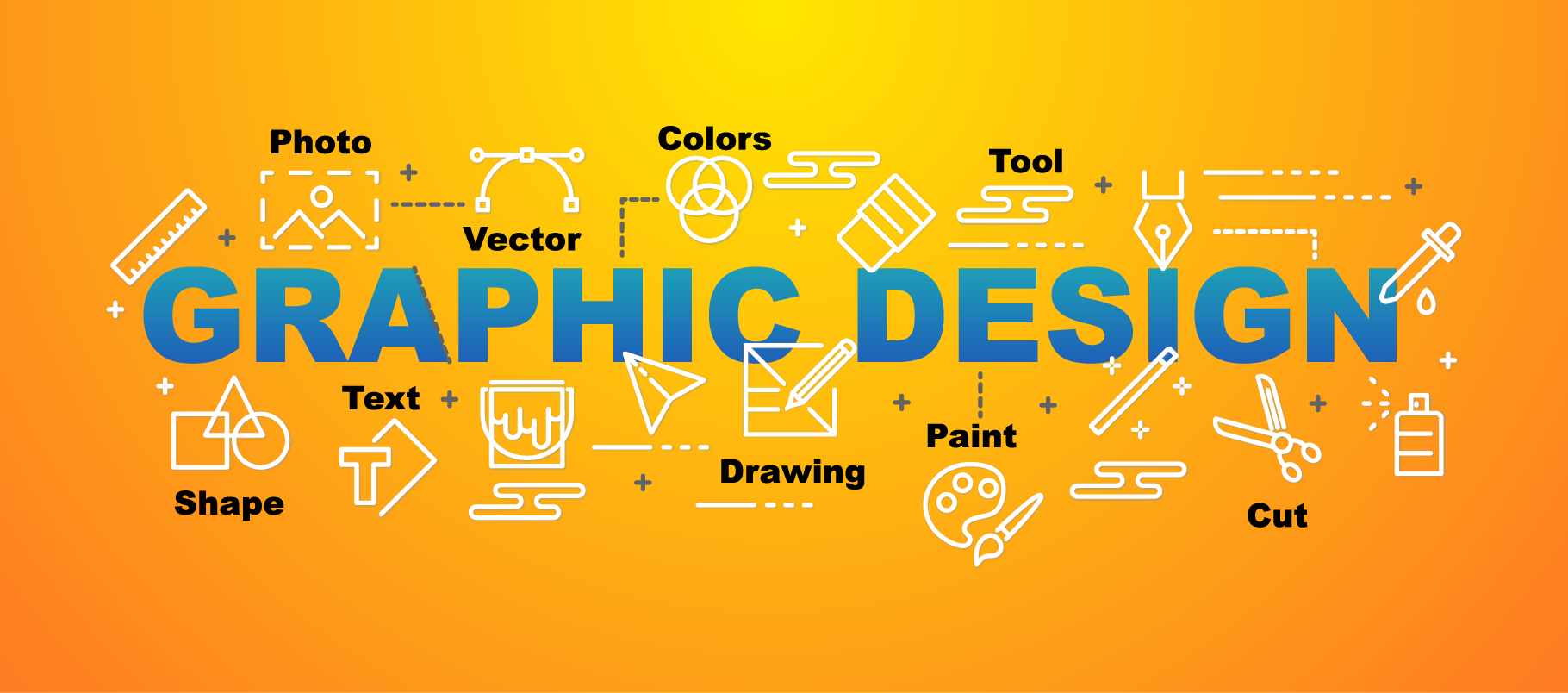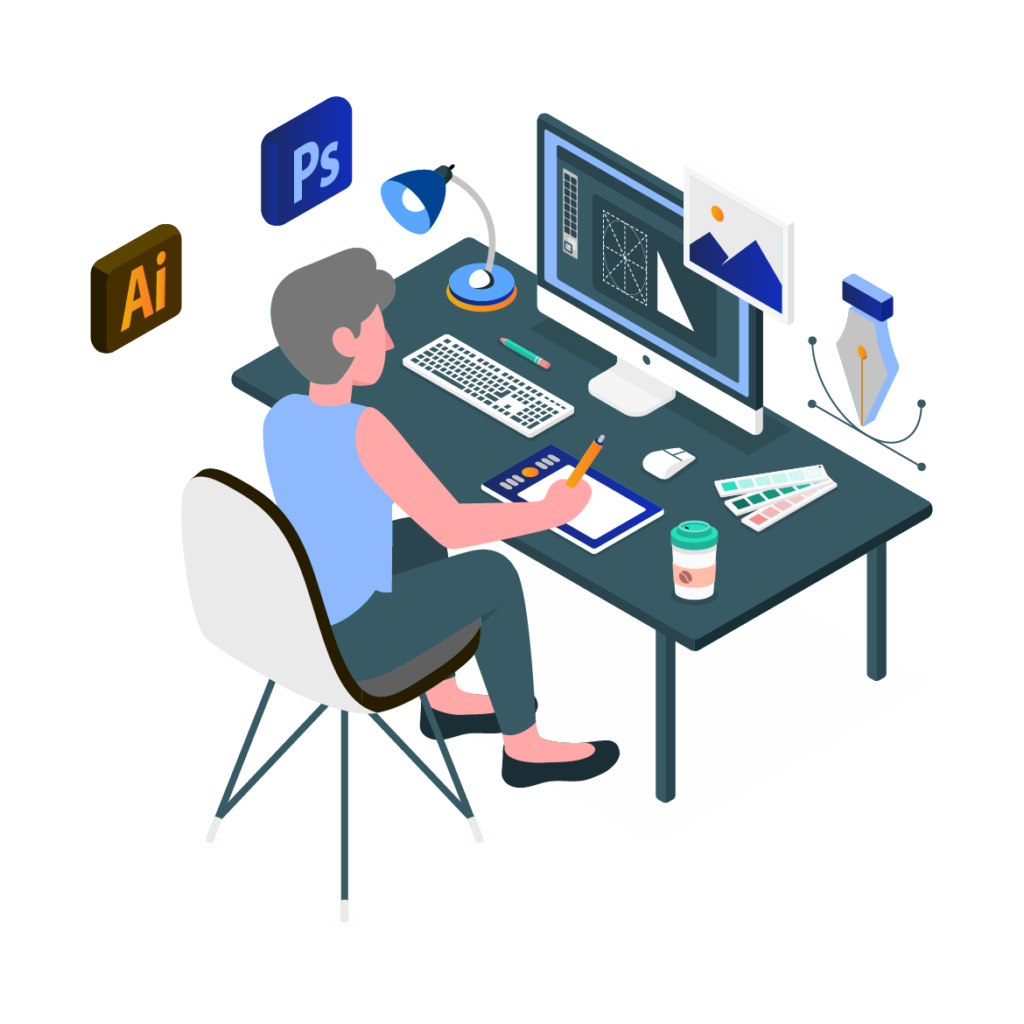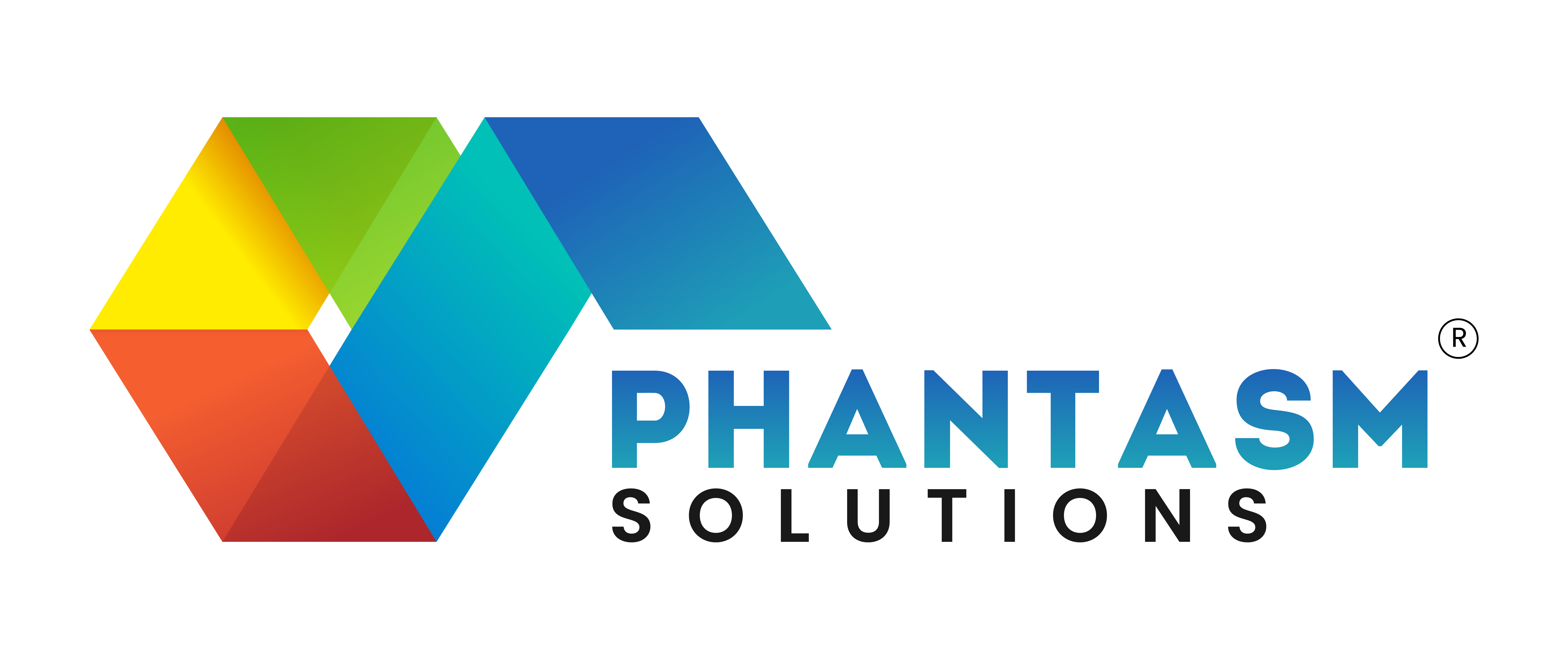Augmented Reality and Graphic Design

Transforming Visual Communication and Shaping the Future
The fusion of augmented reality (AR) technology with graphic design has unleashed a revolution in visual communication. Graphic designers now have the power to create immersive and interactive experiences that transcend traditional 2D design. In this article, we delve into the symbiotic relationship between AR and graphic design, exploring how they collaborate to shape the future of visual storytelling.
Redefining Visual Communication:
Augmented reality has empowered graphic designers to craft dynamic and interactive designs that captivate audiences in novel ways. By seamlessly integrating digital content into the physical world, designers can produce visuals that blur the boundaries between reality and imagination. Examples such as AR-enhanced packaging and interactive print materials showcase how AR is redefining the landscape of visual communication.
Bridging the Physical and Digital Realms:
AR serves as a bridge between the physical and digital worlds, enabling designers to forge seamless experiences that merge real-world elements with digital design. Through AR, static visuals transform into interactive experiences, offering a captivating engagement that was once unimaginable. Applications of AR in product packaging, interactive advertisements, and even revitalizing museum exhibits exemplify the potential of this technology.

Interactive Brand Experiences:
AR empowers graphic designers to create immersive brand experiences that resonate with consumers. Marketing campaigns and product showcases can now leverage AR to establish unique and memorable connections with audiences. Designers utilize AR to breathe life into products, narrate compelling brand stories, and foster meaningful interactions through personalized and interactive experiences.
Spatial Design and Environmental Graphics:
The integration of AR opens up a realm of possibilities for spatial design and environmental graphics. Graphic designers can overlay digital information onto physical spaces, crafting interactive and immersive installations. From enhancing retail spaces with dynamic displays to creating interactive wayfinding systems in public spaces, AR transforms environments and buildings into dynamic, interactive canvases.
User-Centric Design:
AR technology places a strong emphasis on user-centered design, providing personalized and context-aware experiences. Graphic designers are tasked with creating AR content that seamlessly integrates into users’ environments, offering value, utility, and entertainment. This user-centric approach prompts designers to consider spatial, temporal, and interactive aspects, resulting in more engaging and relevant visual content for the future.
Conclusion:
The emergence of augmented reality has ushered in a significant transformation in the field of graphic design, offering unprecedented opportunities for immersive and interactive visual experiences. AR has redefined how we communicate visually by bridging the physical and digital realms and enabling interactive brand experiences. It has also expanded the horizons of spatial design and environmental graphics, all while emphasizing a user-centric approach. As AR technology advances, graphic designers are positioned at the forefront of shaping the exciting future of visual storytelling, brand communication, and environmental design. The fusion of graphic design and AR is propelling the discipline into uncharted territories, promising a future that is as dynamic as the experiences it creates.
Master the Art of Graphic Designing with Phantasm Digital Works

Welcome to the Phantasm Digital Works Blog: Mastering the Art of Graphic Designing
Welcome to the official blog of Phantasm Solutions, your go-to digital marketing agency! In this blog, we will explore the world of graphic designing and provide you with valuable insights, tips, and tricks to master this art form. Whether you are a beginner or an experienced professional, our blog aims to enhance your skills and bring your creativity to life. From Adobe Illustrator techniques to motion graphics and visual graphic design, we will cover a wide range of topics to help you become a proficient graphic designer. So, join us on this exciting journey and unleash your artistic potential in the world of web graphic design.
1. The Impact of Graphic Design on Digital Marketing: Elevating Brand Recognition, Engagement, and Conversions in a Competitive Landscape
In today’s highly competitive digital landscape, visually appealing graphics play a crucial role in capturing the attention of potential customers. With the increasing use of social media platforms, websites, and mobile apps, it has become more important than ever for businesses to invest in high-quality graphic design.
Effective graphic design can enhance brand recognition by creating a unique and memorable visual identity. A well-designed logo, for example, can instantly convey the values and personality of a brand, making it easier for consumers to recognize and connect with it.
Moreover, engaging graphics can significantly increase user engagement. Studies have shown that content with relevant images gets 94% more views than content without visuals.
By incorporating attractive and relevant graphics into your digital marketing efforts, you can effectively keep your audience engaged and interested in what you have to offer.
Furthermore, graphic design can also drive conversions for your business. A visually appealing website or ad can make a lasting impression on potential customers, making them more likely to take the desired action, whether it be making a purchase, signing up for a newsletter, or contacting your business.

2. Crafting Brand Identity: Unveiling the Distinctive Elements Through Graphic Design
Every business has its own identity, and it is important to convey this uniqueness through your graphic designs. A strong brand identity can set you apart from your competitors and create a lasting impression on your audience. In this section, we will explore ways to establish a consistent visual language that reflects your brand’s personality and values.
One of the first steps in creating a unique brand identity is understanding your target audience. By knowing their preferences, needs, and aspirations, you can tailor your graphic designs to resonate with them on a deeper level. This includes choosing the right color palette, typography, and imagery that aligns with your brand’s values and appeals to your audience’s emotions.
Consistency is key when it comes to branding. Your graphic designs should be consistent across all platforms and touchpoints, whether it’s your website, social media profiles, or offline marketing materials. This ensures that your audience instantly recognizes and connects with your brand, regardless of where they encounter your designs.
3. Mastering the Art: Essential Graphic Design Tools and Techniques for Effective Brand Communication
To master the art of graphic designing, one must have a solid understanding of the tools and techniques available. The right graphic design tools can greatly enhance your creativity and productivity, allowing you to bring your ideas to life and deliver exceptional designs. In this section, we will provide comprehensive guidance on utilizing industry-standard software, exploring different design elements, and creating eye-catching compositions that effectively communicate your brand’s message.
One of the most fundamental tools for graphic design is Adobe Photoshop. This software offers a plethora of powerful features and functions, enabling you to edit and manipulate images, create stunning visual effects, and design custom graphics. Adobe Illustrator is another essential tool that allows you to create vector-based artwork and illustrations, making it ideal for designing logos, icons, and scalable graphics.
In addition to these software programs, it is crucial to familiarize yourself with design principles and techniques. Understanding concepts like color theory, typography, layout, and composition will enable you to create visually appealing and balanced designs. Furthermore, learning about the latest trends and best practices in graphic design can help you stay current and produce designs that resonate with your target audience.

4. Unveiling the Influence: The Power of Color and Typography in Graphic Design
Color and typography are two vital components of graphic design that greatly influence user perception and brand identity. Understanding the psychology of color and harnessing the power of typography can elevate your designs and effectively communicate your brand’s message.
When it comes to color, each hue evokes a different emotion and has its significance. By understanding the psychology behind colors, you can create designs that evoke the desired emotions and resonate with your target audience. We will delve into the meaning of different colors and explore how to select the perfect color palette for your brand. Additionally, we will provide tips on combining colors effectively and creating color harmonies that enhance the overall visual appeal of your designs.
Typography, on the other hand, plays a crucial role in creating visual hierarchy and conveying information. Selecting the right fonts and using them strategically can enhance readability and help communicate your message more effectively. We will discuss the different types of fonts, their characteristics, and how to pair them to create visually pleasing and cohesive designs.
5. The Art of Storytelling through Visual Communication: Crafting Compelling Narratives with Great Designs
Great designs can tell stories and evoke emotions. Whether it’s through images, infographics, or data visualization, visual storytelling is a powerful tool that captures the hearts and minds of your target audience. In this next blog post, we will explore the intricacies of visual storytelling and provide you with practical tips on how to craft a compelling narrative through your designs.
We will delve into the importance of understanding your audience and their needs, as well as how to use visuals to create a connection and emotional resonance. We will also discuss the different elements of a storytelling design, such as composition, framing, and sequencing, and how they contribute to the overall narrative.
Alongside talking about the theoretical aspects, we will also showcase real-world examples and case studies to illustrate the impact of effective visual storytelling. By the end of this blog post, you will have gained a deeper understanding of how to harness the art of storytelling through visual communication, enabling you to create designs that leave a lasting impact.
6. Harmony in Creation: Nurturing Collaboration in Graphic Design for Exceptional Outcomes
In the realm of graphic design, the art of collaboration stands as the cornerstone for achieving extraordinary design outcomes. Whether operating within a team or partnering with fellow creative professionals, mastering the nuances of effective communication and idea exchange is pivotal.
A seamless collaboration allows for the harnessing of diverse skills and expertise within the team, transcending individual contributions to yield designs that are not merely visually striking but also intricately aligned with the strategic objectives of your client. The ability to navigate and capitalize on the collective creative energy leads to a symbiotic fusion of ideas, resulting in designs that transcend expectations and leave a lasting impact.
Conclusion: Embarking on a Continuous Journey - Mastering the Art of Graphic Designing with Passion, Dedication, and Adaptability | Insights from Phantasm Digital Works
Mastering the art of graphic design is a continuous journey that requires passion, dedication, and a willingness to adapt to new trends and techniques. By implementing the insights shared in this blog post, you can elevate your graphic design skills and create visually stunning designs that captivate your audience, boost your brand’s online presence, and drive tangible business results.
Collaboration plays a crucial role in graphic design, allowing you to leverage the diverse skills and expertise of your team members. In our upcoming blog posts, we will delve into the art of collaboration in graphic design and provide valuable tips on how to effectively work with photographers, illustrators, copywriters, and other team members. We will also explore techniques for fostering a collaborative environment that encourages creativity and innovation.
Stay tuned for more exciting content from Phantasm Digital Works, your go-to digital marketing agency. Together, we can master the art of graphic designing and create exceptional design outcomes.



